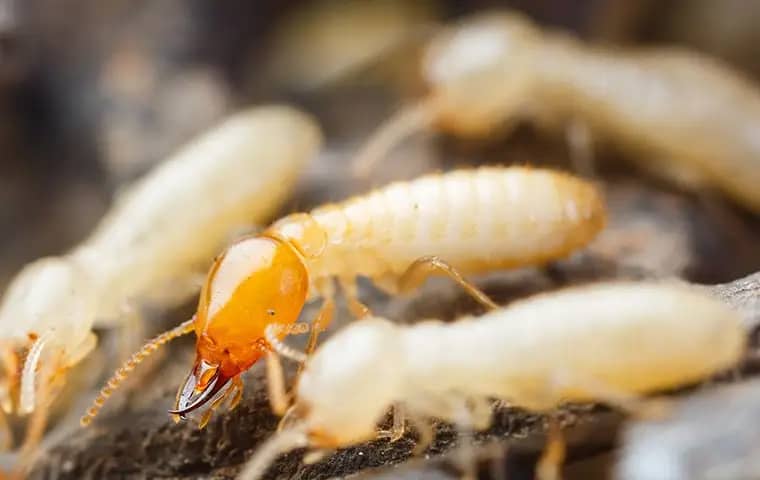Here’s what Jacksonville homeowners should know about the signs of subterranean termites, why they’re so hard to get rid of, how they get into homes, and when it’s time to call pest control in Jacksonville to get rid of your subterranean termites.
Signs Of Subterranean Termites On Your Property
Even though they are the most common type of termites in the United States, identifying subterranean termites isn’t always easy – there are three different types of subterranean termites, and each one looks a little different:
- Soldiers: These subterranean termites defend their colonies, and you can recognize them by their large mandibles, creamy-white coloring, and brown heads.
- Alates (swarmers): Usually black or dark brown in color, swarmers have two pairs of wings and are responsible for reproducing and starting new colonies.

- Workers: At only ¼ of an inch in length, workers are cream-colored and don’t have any wings.
Subterranean termites get their name from where they build their nests. Rather than hide in your walls as drywood termites do, subterranean termites build their nests underground where there’s more moisture. They use mud tubes to move from underground areas to their nearest food source.
Some of the signs of termites include:
- There’s dirt on your wall where subterranean termites have come in contact with the soil.
- You’re noticing mud tunnels near the foundation of your home.
- Your walls sound hollow when you tap on them.
- You’re noticing discarded wings from termite swarms around your home or property.
If you notice these or other signs of termites, it is important to take action right away. The longer an infestation goes untreated, the more difficult it becomes to eliminate.
Why It Is So Hard To Get Rid Of Subterranean Termites
While they may not lay many eggs at first, subterranean termites can eventually reproduce quickly once their colony is established – with female swarmers laying up to twelve eggs each only days after mating. Large subterranean termite colonies can hold millions of termites.
Subterranean termites don’t bite people, but they can cause damage in other ways and be difficult to eliminate. As far as termites go, subterranean termites tend to cause the most damage: not only do they build bigger colonies, but they’re also underground, which makes it easier for them to hide and go unnoticed for longer periods of time. In some cases, there may even be multiple subterranean termite colonies feasting on the same home, which only adds to the damage they’ll cause.
Subterranean termites slowly eat away at the wood in your home, and while they can eat up to a pound of wood per day, their presence could go undetected for years. By the time a lot of homeowners discover their subterranean termite problem, these pests have already caused thousands of dollars (or more) in structural damage.
How Do Subterranean Termites Get Into Homes?
The easiest way for subterranean termites to get into your home is through wood-to-ground contact. Subterranean termites will use areas where wood comes in contact with the soil outside your home as an entry point. This could be wooden siding, doorframes, porch steps, and even deck posts. In some cases, tiny cracks and crevices in the foundation of your home could also serve as an entrance for subterranean termites.
To make it easier for them to move from one place to another, subterranean termites will also create mud tubes around your home’s foundation. When they need to look for their next food source, subterranean termites will use these mud tubes to travel without being exposed to the open air. These tiny tunnels are made up of wood and mud, and termites use them to protect themselves from dry environments and other predators when they’re moving from one spot to the next.
Who To Call About Subterranean Termites
If you do have an active subterranean termite infestation, there’s no need to let these pests cause any more damage than they already have – and that means getting professional pest control from those of us at Trad’s Pest Control.
Not only can we root out a subterranean termite infestation, but we can also see how much structural damage they’ve managed to cause too. If you suspect you’ve got subterranean termites, call us at Trad’s Pest Control today to learn more about our termite control program.
